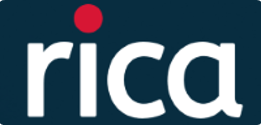Removal of antibiotics form water by nanofiltration
DOI:
https://doi.org/10.18226/25253824.v8.n13.01Keywords:
Nanofiltration, Contamination with antibiotics, Water TreatmentAbstract
Conventional methods usually employed in water and wastewater treatment plants have presented low effectiveness in removing antibiotics and other contaminants of emerging concern. Therefore, in view of the problems associated with these contaminants (toxicity, carcinogenic potential, development of bacteria that are super resistant to antibiotics, endocrine disruption, etc.), it is necessary to study new technologies for treating water and wastewater. In this context, the present study evaluates nanofiltration, a membrane technology, for removing three widely consumed antibiotics (Tetracycline, Norfloxacin and Sulfamethoxazole) from water. The NF270 membrane (DOW – FilmTec), a polyamide membrane with a molecular weight cut-off of 400 Da, was used and evaluated in terms of productivity and ability to remove antibiotics at pressures from 2 to 8 bar. High productivity was obtained, with permeate fluxes around 100 kg h–1 m–2 at a pressure of 8 bar, and antibiotic removals of up to 95%, demonstrating the effectiveness of nanofiltration in removing these contaminants. It is important to point out that under the evaluated conditions, no fouling of the membrane was observed, a very important fact as it allows for a longer useful life of the membranes, reducing operation and maintenance costs.
References
Sivaranjanee, R. & Kumar, P. S. (2021). A review on remedial measures for effective separation of emerging contaminants from wastewater. Environmental Technology & Innovation, 23, 101741. https://doi.org/10.1016/j.eti.2021.101741
Santos, M. C., Antonin, V. S., Souza, F. M., Aveiro, L. R., Pinheiro, V. S., Gentil, T. C., Lima, T. S., Moura, J. P. C., Silva, C. R., Lucchetti, L. E. B., Codognoto, L., Robles, I. & Lanza, M. R. V. (2022). Decontamination of wastewater containing contaminants of emerging concern by electrooxidation and Fenton-based processes – A review on the relevance of materials and methods. Chemosphere, 307, 135763. https://doi.org/10.1016/j.chemosphere.2022.135763
Klein, E. Y., Van Boeckel, T. P., Martinez, E. M., Pant, S., Gandra, S., Levin, S. A. Goossens, H. & Laxminarayan, R. (2018). Global increase and geographic convergence in antibiotic consumption between 2000 and 2015. Proceedings of the National Academy of Sciences, 115(15), p. 3463-3470 https://doi.org/10.1073/pnas.1717295115
Senta, I., Terzic, S. & Ahel, M. (2013). Occurrence and fate of dissolved and particulate antimicrobials in municipal wastewater treatment. Water Research, 47(2), 705–714. https://doi.org/10.1016/j.watres.2012.10.041
De Souza, D. I., Giacobbo, A., Da Silva Fernandes, E., Rodrigues, M. A. S., De Pinho, M. N. & Bernardes, A. M. (2020). Experimental Design as a Tool for Optimizing and Predicting the Nanofiltration Performance by Treating Antibiotic-Containing Wastewater. Membranes, 10(7), 156. https://doi.org/10.3390/membranes10070156
Giacobbo, A., Soares, E. V., Bernardes, A. M., Rosa, M. J. & De Pinho, M. N. (2020). Atenolol removal by nanofiltration: A case-specific mass transfer correlation. Water Science and Technology, 81(2), 210–216. https://doi.org/10.2166/wst.2020.073
Adams, C., Wang, Y., Loftin, K. & Meyer, M. (2002). Removal of Antibiotics from Surface and Distilled Water in Conventional Water Treatment Processes. Journal of Environmental Engineering, 128(3), 253–260. https://doi.org/10.1061/(ASCE)0733-9372(2002)128:3(253)
Sistema Nacional de Informações sobre Saneamento: 25o Diagnóstico dos Serviços de Água e Esgotos – 2019. (2020, dezembro). MINISTÉRIO DO DESENVOLVIMENTO REGIONAL. SECRETARIA NACIONAL DE SANEAMENTO – SNS. 25. ed. Brasília, DF.
The United Nations World Water Development Report 2019: Leaving No One Behind. (2019, 19 de março). WWAP – UNESCO WORLD WATER ASSESSMENT PROGRAMME. Paris.
Wang, J., Zhuan, R. & Chu, L. (2019). The occurrence, distribution and degradation of antibiotics by ionizing radiation: An overview. Science of The Total Environment, 646, 1385–1397. https://doi.org/10.1016/j.scitotenv.2018.07.415
Montagner, C., Sodré, F., Acayaba, R., Vidal, C., Campestrini, I., Locatelli, M., Pescara, I., Albuquerque, A., Umbuzeiro, G. & Jardim, W. (2018). Ten Years-Snapshot of the Occurrence of Emerging Contaminants in Drinking, Surface and Ground Waters and Wastewaters from São Paulo State, Brazil. Journal of the Brazilian Chemical Society. https://doi.org/10.21577/0103-5053.20180232
Dinh, Q., Moreau-Guigon, E., Labadie, P., Alliot, F., Teil, M.-J., Blanchard, M., Eurin, J. & Chevreuil, M. (2017). Fate of antibiotics from hospital and domestic sources in a sewage network. Science of The Total Environment, 575, 758–766. https://doi.org/10.1016/j.scitotenv.2016.09.118
DIRECTIVE 39/EU, E. P. (2013, 12 de agosto). Official Journal of the European Union. Luxembourg.
Pulicharla, R., Proulx, F., Behmel, S., Sérodes, J.-B. & Rodriguez, M. J. (2021). Occurrence and seasonality of raw and drinking water contaminants of emerging interest in five water facilities. Science of The Total Environment, 751, 141748. https://doi.org/10.1016/j.scitotenv.2020.141748
Hung, D. C., Nguyen, N. C., Uan, D. K. & Son, L. T. (2017). Membrane processes and their potential applications for fresh water provision in Vietnam. Vietnam Journal of Chemistry, 55(5), 533. https://doi.org/10.15625/2525-2321.2017-00504
Giacobbo, A., Bernardes, A. M. & De Pinho, M. N. (2022). The role of pressure-driven membrane processes on the recovery of value-added compounds and valorization of lees and wastewaters in the wine industry. In: COSTA, J. M. et al. (Eds.). Improving Sustainable Viticulture and Winemaking Practices. (p. 305–326.) [s.l.]. Londres: Elsevier/Academic Press.
De Souza, D. I., Dottein, E. M., Giacobbo, A., Siqueira Rodrigues, M. A., De Pinho, M. N. & Bernardes, A. M. (2018). Nanofiltration for the removal of norfloxacin from pharmaceutical effluent. Journal of Environmental Chemical Engineering, 6(5), 6147–6153. https://doi.org/10.1016/j.jece.2018.09.034
Giacobbo, A., Sapuda, G. P. O., Rodrigues, M. A. S., Ferreira, J. Z. & Bernardes, A. M. (2021). Processos de separação por membranas para remoção de fármacos da água: um estudo sobre a rosuvastatina. Anais do 31° Congresso Brasileiro de Engenharia Sanitária e Ambiental, Curitiba, Paraná.
Da Trindade, C. D. M., Giacobbo, A., Ferreira, V. G., Rodrigues, M. A. S. & Bernardes, A. M. (2015). Membrane separation processes applied to the treatment of effluents from nanoceramic coating operations. Desalination and Water Treatment, 55(1), 28–38. https://doi.org/10.1080/19443994.2014.911703
Downloads
Published
How to Cite
Issue
Section
License
Copyright (c) 2024 Alexandre Giacobbo, Sr. Luis, Andréa

This work is licensed under a Creative Commons Attribution 4.0 International License.
Authors keep the copyright and cede to the journal the right of publishing first. Published works are licensed under a Creative Commons Attribution 4.0 International (CC BY 4.0) license, allowing the sharing of the work with recognition of the authorship and initial publication in this journal.






